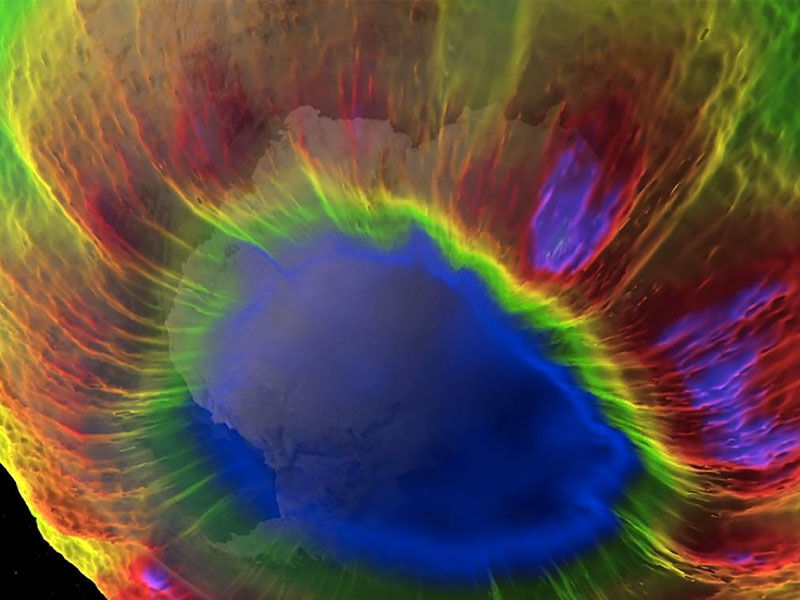According to satellite data, the ozone hole above the Antarctic has grown to be one of the largest on record after enlarging to three times the area of Brazil. Worse yet, since the depletion often doesn’t peak until mid-October, it might possibly become even larger than the 10.3 million sq miles (26 million sq km) it was observed at on September 16. The reason for the size of the ozone hole this year is unknown to scientists, but some have theorized that it may be related to the Tonga undersea volcanic eruption in January 2022.
It starts to expand every August at the beginning of the Antarctic Spring, reaches its height around October, then begins to gradually shrink before closing once more.

This happens as Antarctica transitions into its summer season and the stratosphere’s temperatures start to climb.
As a result, the process that depletes ozone and causes the hole slows down and ultimately grinds to a halt, preventing the hole from expanding further.
Due in part to Australia’s Black Summer bushfires in 2019–20, which emitted significant volumes of ozone-depleting smoke, the hole has closed three years later than usual.
This year, it debuted several weeks early at the beginning of August, and its exact closing date is yet unknown. Since 1985, several procedures have been put in place to try and close the hole caused by ozone depletion over the frozen continent. The results this year from Europe’s Copernicus Sentinel-5P satellite constitute a blow, even if experts are optimistic that the Montreal Protocol, which was established in 1987, has enabled the hole to recover.
‘Our operational ozone monitoring and forecasting service reveals that the 2023 ozone hole got off to an early start and has grown significantly since mid-August,’ said Antje Inness, a senior scientist at the Copernicus Atmosphere Monitoring Service (CAMS).
One of the largest ozone holes ever recorded, it grew to a size of more than 26 million square kilometers on September 16.
She clarified that the submarine eruption in Tonga might be to blame.
According to Dr. Inness, the Hunga Tonga volcanic eruption in January 2022 released a significant amount of water vapour into the stratosphere, but it didn’t reach the south polar regions until the ozone hole’s 2022 closure.
Also read: While cycling, a man balances a refrigerator on his head. Real or fake?
The increased production of polar stratospheric clouds, where chlorofluorocarbons (CFCs) can react and speed ozone depletion, may have been caused by the water vapor.
“The presence of water vapor may also contribute to the cooling of the Antarctic stratosphere, further enhancing the formation of these polar stratospheric clods and leading to a more robust polar vortex,” the study’s authors write.
Despite this hypothesis, experts warn that further research is still needed to determine the actual effects of the eruption on the hole.

























